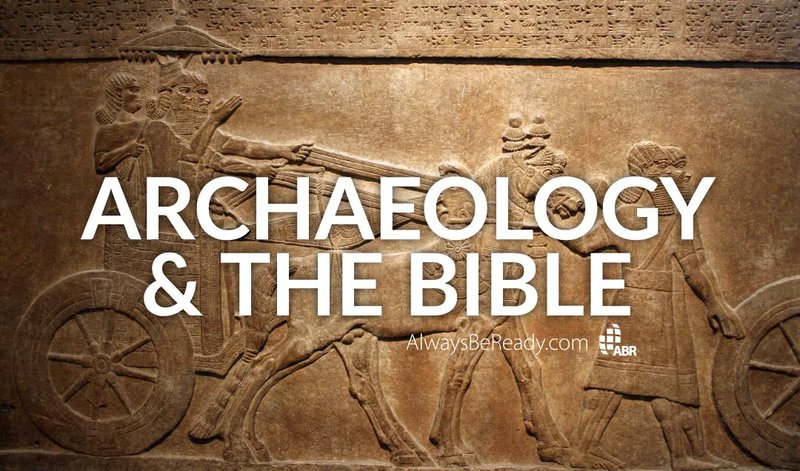· Apologetics > Apologetics Basics > History · 5 min read
Biblical Insights on Evidence of the Exodus
Discover compelling evidence of the Exodus, shedding light on the historical event's validity and significance. Delve into archaeological findings and historical accounts supporting this ancient biblical narrative.

Evidence of the Exodus
Critics of the Bible have claimed that there is no evidence of a mass Hebrew exodus from Egypt. However, this claim is factually incorrect. While it is rare to find direct proof of ancient events, there is archaeological evidence that corresponds to the Bible’s description of the exodus. It’s important to note that evidence doesn’t always survive for thousands of years, especially when it comes to significant events. Instead, we can look for remnants, circumstantial evidence, collaborating artifacts, and even some random documents to support the historical accuracy of the exodus.
The Problem with Pop Culture
Before diving into the evidence, it’s crucial to address a common misconception perpetuated by pop culture. Movies like “The Prince of Egypt” and “The Ten Commandments” often use the name Rameses for the Pharaoh of the exodus. However, Scripture never identifies Pharaoh by that name. Looking for explicit evidence of the exodus in connection with Rameses II is an attempt to verify a movie, not the Bible. It’s essential to base our understanding on accurate biblical sources rather than popular culture.
Dating Ancient Events
Dating ancient events can be challenging due to different dating systems used by various cultures. Egyptian history, in particular, has an erratic record. Egyptians sometimes recorded rulers who reigned simultaneously as if they were consecutive. This inconsistency makes it difficult for historians to determine exact dates. Biblical scholars typically place the exodus from Egypt somewhere between 1446 and 1225 BC. Within this period, there is ample archaeological evidence that supports the biblical account.
Archaeological Evidence
Slavery in Egypt: There is evidence of mud-and-straw bricks used in pyramid construction (Exodus 5:7–8) and physical evidence that Asiatic people were enslaved in Egypt (Exodus 1:13–14).
Infant Burials: Skeletons of infants, usually several in one box, have been found buried under homes in a slave town called Kahun (Exodus 1:16). This corresponds to Pharaoh’s slaughter of Hebrew infants.
Abandoned City: The city of Kahun was abandoned hastily, with tools, household implements, and other possessions left behind (Exodus 12:30–34, 39). This aligns with the Israelites’ sudden exit from Egypt after the Passover.
Magical Opposition: Court advisors in Egypt used rods that resembled snakes (Exodus 7:10–12), which partially corroborates the magical opposition against Moses performed by Pharaoh’s advisors.
Ipuwer Papyrus: The Ipuwer Papyrus, a work of poetry, describes plagues, rivers turning to blood, fires, and strangers entering Egypt—the stranger people from outside (Exodus 9:1).
Amarna Letters: Ancient correspondence between Egyptian and Middle Eastern rulers mentions significant unrest caused by a people group labeled as Habiru or ‘Apiru (Exodus 9:1).
Conquered Cities: Archaeological discoveries have revealed evidence of cities like Jericho being conquered during the timeframe of the exodus.
Aligning with Egyptian Rulers
Several scenarios in Egyptian history align with the biblical book of Exodus. The traditional date for the exodus, around 1446 BC, would align with events involving Thutmose I, Amenhotep I, Hatshepsut, Amenhotep II, and Thutmose IV. For example:
- The slaughter of infants (Exodus 1:16–21) could correspond to the reign of Thutmose I or Amenhotep I.
- Moses’ life overlaps with Hatshepsut’s rule (Exodus 2:5–6), who co-ruled Egypt and had conflicts with her stepson Thutmose III.
- Amenhotep II’s army ceased military campaigns around 1446 BC (Exodus 14:28), and his successor, Thutmose IV, faced skepticism about his legitimacy (Exodus 11:4–5; 12:29).
While this traditional dating aligns well with the biblical narrative, a minority of Egyptologists propose a significant revision of the historical timeline. One such theory suggests aligning the book of Exodus with Amenemhat III, who had no surviving sons and a childless daughter, Sobekneferu. Her death marked the end of that Dynasty, followed by Neferhotep I, who left behind no mummy. These alternative theories still present compelling matches between Egyptian rulers and biblical events.
Lack of Hebrew Remains in the Wilderness
Critics often point out the supposed lack of Hebrew graves or bones in the wilderness between Egypt and Israel. However, this complaint fails to consider Israel’s traditional burial practices. Israelites would disinter bodies after a year and rebury the bones in a common family location. This practice explains why Hebrew remains wouldn’t be abundant in the wilderness.
Additionally, nature does not easily preserve remains for thousands of years. Improper burial was one of the consequences for disobedience warned by God (Deuteronomy 28:26). Hasty or slipshod burials would have allowed scavengers and the elements to eradicate bodies relatively quickly. Therefore, the absence of Hebrew graves or bones in the wilderness does not indicate a lack of evidence.
Why This Matters
The evidence for the exodus demonstrates that the main details of the biblical account are not only plausible but also present in archaeology. This reinforces our confidence in the historical accuracy of Scripture. It substantiates the reality of a sizable Hebrew workforce in Egypt, their sudden departure during a chaotic time, and the subsequent conquest of the land of Canaan. The exodus is a foundational event in the history of Israel, and its validation strengthens our understanding of God’s faithfulness to His people.
Think About It
- How does the evidence of the exodus enhance your confidence in the historical reliability of the Bible?
- Can you think of other instances where pop culture has influenced our understanding of biblical events? How can we distinguish between biblical accuracy and artistic interpretation?
- Reflect on the importance of archaeological evidence in supporting biblical narratives. How does it deepen your appreciation for the historical context of Scripture?
- Consider the challenges involved in dating ancient events. How does this impact our understanding of historical timelines and the accuracy of biblical accounts?



